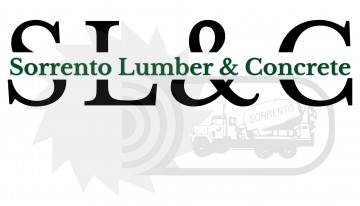
Proper Air Sealing in a Home Renovation: A Guide for Contractors and Remodelers
When it comes to home renovation, one crucial aspect that often gets overlooked is air sealing. Proper air sealing can significantly enhance a home’s energy efficiency, comfort, and indoor air quality. For contractors and remodelers, understanding and implementing effective air sealing techniques is essential to delivering top-quality renovations. Additionally, knowledge of the Home Energy Rating System (HERS) can provide valuable insights into the energy performance of a home. In this blog, we’ll explore the importance of air sealing, techniques to achieve it, and the role of HERS in home renovations.
The Importance of Air Sealing
Air sealing is the process of closing gaps and cracks in a building’s envelope to prevent air leakage. Here’s why it’s important:
- Energy Efficiency: Air leaks can account for a significant portion of a home's energy loss. By sealing these leaks, you can reduce heating and cooling costs.
- Comfort: Proper air sealing helps maintain consistent indoor temperatures, reducing drafts and cold spots.
- Indoor Air Quality: Sealing gaps prevents outdoor pollutants, allergens, and moisture from entering the home, enhancing indoor air quality.
- Building Durability: Reducing moisture infiltration through air sealing can prevent structural damage and mold growth.
Common Areas for Air Leaks
During a renovation, it’s essential to identify and address common areas where air leaks occur:
- Windows and Doors: Check for gaps around frames and weatherstripping.
- Attic and Roof: Inspect for gaps around attic hatches, plumbing vents, and electrical penetrations.
- Walls: Look for gaps in exterior walls, particularly around outlets, switches, and plumbing pipes.
- Basement and Crawl Spaces: Seal gaps around the foundation, sill plates, and ductwork.
Effective Air Sealing Techniques
Implementing proper air sealing techniques during a renovation can significantly improve a home’s energy performance. Here are some effective methods:
- Caulking and Weatherstripping: Use caulk to seal small gaps and cracks, and apply weatherstripping around doors and windows.
- Spray Foam Insulation: Spray foam is ideal for sealing larger gaps and providing insulation in one step.
- Foam Gaskets: Install foam gaskets behind outlet and switch plates on exterior walls.
- Rigid Foam Insulation: Use rigid foam insulation to seal and insulate larger openings, such as attic hatches and basement rim joists.
- Air Barrier Systems: Consider installing continuous air barrier systems, such as house wraps, to provide comprehensive air sealing.
The Role of the Home Energy Rating System (HERS)
The Home Energy Rating System (HERS) is a nationally recognized system for inspecting and calculating a home's energy performance. Here’s why HERS is relevant to contractors and remodelers:
- Energy Assessment: A HERS rating provides a detailed assessment of a home's energy efficiency, identifying areas for improvement.
- Guidance for Renovations: By understanding a home’s HERS rating, contractors can prioritize air sealing and other energy efficiency upgrades during a renovation.
- Increased Value: Homes with a lower HERS score (indicating higher energy efficiency) can have increased market value and appeal to energy-conscious buyers.
- Compliance and Incentives: Some building codes and incentive programs require or reward energy-efficient upgrades, which can be verified through HERS ratings.
Steps to Obtain a HERS Rating
- Hire a Certified HERS Rater: Engage a certified HERS rater to conduct an energy audit of the home.
- Perform Diagnostic Tests: The rater will perform tests such as blower door tests and duct leakage tests to identify air leaks and assess the overall energy performance.
- Receive a Report: The rater will provide a detailed report with a HERS score and recommendations for improving the home’s energy efficiency.
- Implement Improvements: Based on the report, contractors can implement air sealing and other recommended upgrades to improve the HERS score.
Conclusion
Proper air sealing is a critical component of any home renovation, offering significant benefits in terms of energy efficiency, comfort, indoor air quality, and building durability. By understanding and implementing effective air sealing techniques, contractors and remodelers can deliver high-quality renovations that meet the needs of modern homeowners. Additionally, utilizing the Home Energy Rating System (HERS) can provide valuable insights and guidance for improving a home’s energy performance.
As you embark on your next renovation project, prioritize air sealing to ensure your clients enjoy the full benefits of an energy-efficient and comfortable home.

